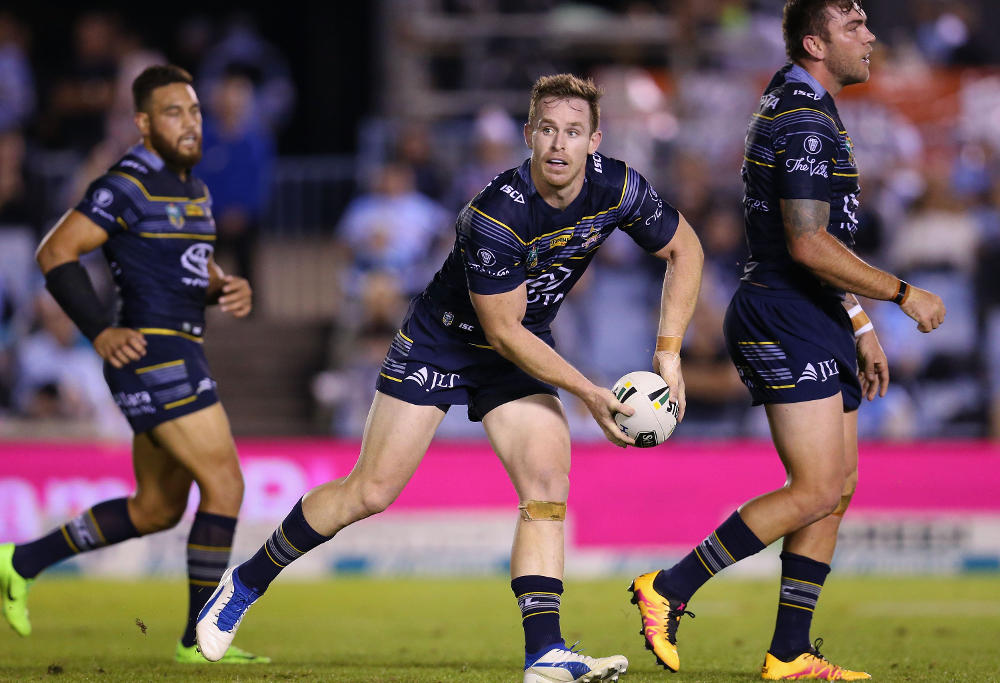It might be too late for Newtown and Illawarra, but the perfect start would be to give Balmain and Western Suburbs back their independence, and bring North Sydney back out of the cold as the Central Coast Bears.
The Tigers faithful would flock back to Leichhardt, the lost Magpies fans would be grateful to see the black and white jersey return to Campbelltown, while the Bears faithful would happily jump a train to see the red and black jersey run onto the superbly presented Central Coast Stadium.
The resurrection of the Bears would enjoy two more big bonuses.
The absurd decision to kill off the Bears has left a massive rugby league void to the north of Sydney, with 165 kilometres between Manly’s Northern Beaches and Newcastle.
That’s given rugby, AFL, and the round ball code a free hit in between.
At the last Australian census in 2016, there were 18476 couples living on the Central Coast, which translates to at least 30000 kids – a mass of potential boy and girl rugby league talent.
And having the Bears living, training, and playing among them would obviously be fruitful, ensuring the club’s success and longevity.
The new look NRL competition wouldn’t kick off until 2020, giving Balmain, Wests and the Bears time to settle on a competitive roster.
They would also be helped by the NRL in allowing five top-drawer players per club to break their contracts with other clubs if they decided to join any one of the three resurrected clubs.

(Photo by Jason McCawley/Getty Images)
In the meantime, their status would remain the same with the Wests Tigers playing NRL, and the Bears in the NSW Cup.
So how would the NRL look in 2020?
Let’s take the table of the 2017 competition as the guideline at the completion of the regulation rounds.
I’m going to split the table into two groups, call them odds and evens.
Odds
1. Melbourne Storm
3. Brisbane Broncos
5. Cronulla Sharks
7. Penrith Panthers
9. St George Illawarra Dragons
11. Canterbury Bulldogs
13. New Zealand Warriors
15. Gold Coast Titans
Evens
2. Sydney Roosters
4. Parramatta Ee
6. Manly Sea Eagles
8. North Queensland Cowboys
10. Canberra Raiders
12. South Sydney Rabbitohs
14. Wests Tigers
16. Newcastle Knights
Substitute the Tigers for Balmain, then add the Central Coast Bears to the odds and Western Suburbs to the evens. That gives an 18-strong NRL comp, split into two groups of nine.
Each group plays within the group home-and-away for 18 games, and plays the other group once for 27 games – that’s three more games overall compared to the current set-up.
But it’s completely fair by playing every club, not hit and miss as it stands now with a variety in doubling up against nine clubs.
For example, in 2017 the minor premiers Storm doubled up against the Warriors, Broncos, Sharks, Manly, Rabbitohs, Knights, Cowboys, Roosters, and Raiders.
The Roosters, in finishing second, doubled up against the Titans, Bulldogs, Rabbitohs, Manly, Knights, Broncos, Tigers, Storm, and Sharks.
That was a Russian roulette draw, and it was shown up through all 16 clubs, as it is this season.
In 2020, give a bonus point for scoring four tries and another for losing by seven points or less.
At the completion of the 27 rounds, the odds and evens are combined with the top eight overall qualifying for the quarter-finals – one versus eight, two versus seven, three versus six and four versus five, with winners moving forward in that order.
And that’s how rugby league decision-makers can repair the pain of the past.






























































































